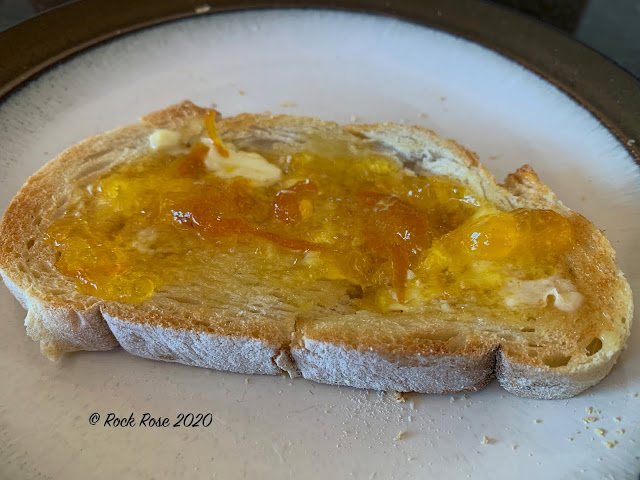This time of year two wonderful garden crops are ready to bring into the kitchen. In the heat of summer I was anxiously awaiting cooler days and the vegetable garden rewards of our mild winters. I sowed seeds of kale, chard and pak choi in 4" pots in my laundry room moving them to the potting shed and under lights when they had a few leaves. This gives them a head start and a better chance of surviving the ravages of the decollate snail and pill bug decimation. I chose the curly kale because we like the slightly bitter taste. Not only do they have a high germination rate but they stay viable for a number of years.
The packet I used was packed for 2017. The leaves are now of a good size for picking with 6 leaves enough for a meal for the two of us. I find kale much easier and more worthwhile to grow than spinach. If you are going to grow kale it pays to find some good recipes. Yesterday morning, in a chapter on winter greens, in a 2006 edition of Bon Appetit magazine, I found the following recipe.
Other than the fact I did not have the more exotic mushrooms (I used baby bellas) I had all the other ingredients to hand including the thyme which I also grow.
It looks exactly like the photo in the magazine and was absolutely delicious. A definite keeper. We had it for dinner but it would make a really great special lunch dish too.
Later on in the day I went into the garage to make the first picking of calamondin fruit. The plants were wheeled into the garage a week ago because of an impending freeze. We were far more sensible this year keeping the pots on the driveway all summer and then using various wheeled carts to bring them in. They are now permanently on a variety of carts for the winter so we can easily transport in and out.
When we lived in Hong Kong we saw hundreds of these trees at Chinese New Year. They are given as gifts and represent good luck and wealth. The Chinese word for the tree is very similar to the word for wealth. But they are more than just decorative trees they make the most delicious marmalade.
Making this marmalade is a real labor of love but so worth it for the absolutely delicious sweet/tart combination of flavors which we love on our toast at breakfast. And there is absolutely no waste as every scrap of the fruit is used, even the pips! Here's how to use your calamondins.
Cut the oranges in half.
Squeeze each half, to remove all the pips and juice, into a sieve over a a bowl. Then slice all the fruit peels thinly and add to the juice. Tie the pips in a muslin bag. For each cup of fruit add 3/4cup water into a large non-reactive pan tying the muslin bag so it is in the mix. Boil for 20 minutes. Cool and leave overnight in the fridge to allow the pectin to develop.
Measure the fruit again and for each cup add one cup of sugar. No pectin needed.
Pour into sterilized jars. No need to can. First batch completed. Lids popped and a good set achieved.
So incredibly delicious on my morning toast.






































7 comments:
You make excellent use of your garden, Jenny! I'm impressed by your harvest of Calamondin, which is one form of citrus I've never tried.
All this looks incredibly delicious, Jenny! Oh, for limitless quantities of toast and jam...
The kale recipe and the marmalade look delicious!
We had an abundance of kale this year but so few recipes to put it to use. Will write this down for next year. Your marmalade looks delicious.
Yes! Good bread, butter and jams. I could live on them.
Such an easy citrus and small. You should look out for them. In fact with such a large Asian community in LA you are bound to see them for Chines New Year.
That looks truly delicious--especially the kale dish. I don't grow kale (lack of sun), but we get a good portion of it every year from our CSA food share. My favorite ways to use it are as kale chips (melt-in-the-mouth tasty!) and in dishes that call for spinach (although I like spinach, too). How wonderful that you cultivated these foods in your garden.
Post a Comment